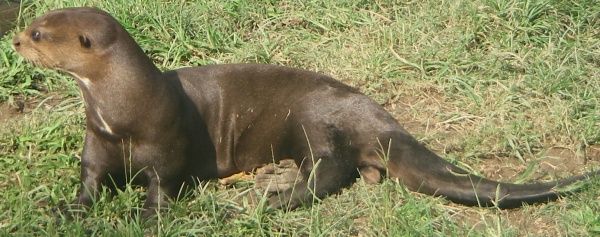Facts About Giant otter
The giant otter, often referred to as the giant river otter, is an intriguing carnivorous mammal native to South America. As the largest member of the weasel family, Mustelidae, these remarkable creatures can reach up to 1.7 meters in length. Unlike their more solitary relatives, giant otters are highly social animals, living in close-knit family groups of three to eight members, typically led by a dominant breeding pair. They are diurnal and are renowned for their extensive range of vocalizations, which they use to communicate various messages, including alarm, aggression, and reassurance.
Giant otters thrive in freshwater rivers and streams, particularly those that are seasonally flooded. Their diet primarily comprises fish, especially characins and catfish, but they are opportunistic feeders and will also prey on crabs, turtles, snakes, and even small caimans. Unfortunately, giant otters face numerous threats, including habitat destruction, poaching for their luxurious pelts, and competition for food from other predators like caimans, in addition to human activities such as mining and agriculture.
Scientifically, the giant otter is the sole member of the genus Pteronura within the subfamily Lutrinae. There are two recognized subspecies: P. b. brasiliensis and P. b. paraguensis. The giant otter has developed unique adaptations to support its semi-aquatic lifestyle, such as dense fur, webbed feet, and a flattened tail that aids in swimming.
These otters are also known for their complex social structures and reproductive behaviors. They live in extended family groups with strong social bonds and frequently hunt cooperatively. They build dens along riverbanks where they breed and raise their young. Classified as endangered by the IUCN, conservation efforts are crucial for their survival. Their existence is threatened by habitat loss, poaching, and human encroachment.
Interactions with indigenous communities vary across the giant otter's range. Some view these animals as pests, while others consider them an integral part of their cultural heritage. Conservation efforts focus on protecting habitats, regulating hunting and fishing practices, and raising awareness about the importance of preserving these iconic creatures.

 Colombia
Colombia